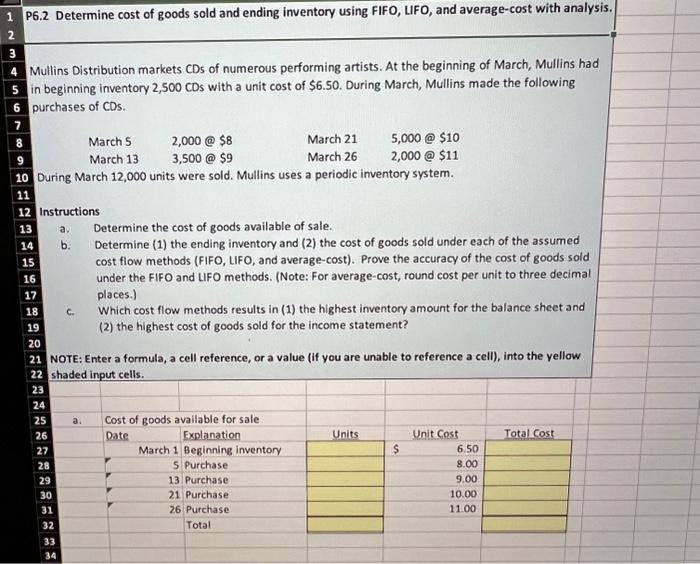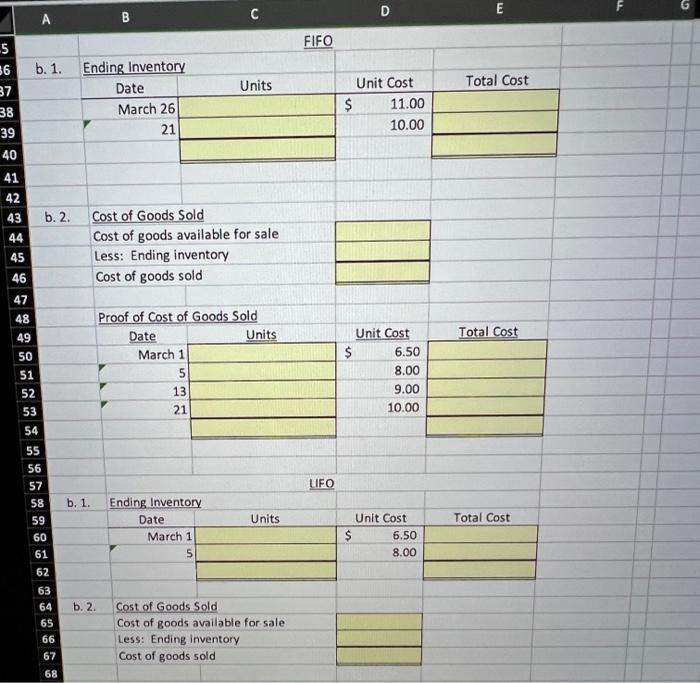Answered step by step
Verified Expert Solution
Question
1 Approved Answer
1 P6.2 Determine cost of goods sold and ending inventory using FIFO, LIFO, and average-cost with analysis. 2 3 4 Mullins Distribution markets CDs of
1 P6.2 Determine cost of goods sold and ending inventory using FIFO, LIFO, and average-cost with analysis. 2 3 4 Mullins Distribution markets CDs of numerous performing artists. At the beginning of March, Mullins had 5 in beginning inventory 2,500 CDs with a unit cost of $6.50. During March, Mullins made the following 6 purchases of CDs. 7 24 25 26 27 28 29 30 8 March 5 2,000 @ $8 3,500 @ $9 9 March 13 10 During March 12,000 units were sold. Mullins uses a periodic inventory system. 11 12 Instructions 13 14 15 16 17 18 19 20 21 NOTE: Enter a formula, a cell reference, or a value (if you are unable to reference a cell), into the yellow 22 shaded input cells. 23 31 32 33 34 a. b. C. a. March 21 March 26 Cost of goods available for sale Date Determine the cost of goods available of sale. Determine (1) the ending inventory and (2) the cost of goods sold under each of the assumed cost flow methods (FIFO, LIFO, and average-cost). Prove the accuracy of the cost of goods sold under the FIFO and LIFO methods. (Note: For average-cost, round cost per unit to three decimal places.) Which cost flow methods results in (1) the highest inventory amount for the balance sheet and (2) the highest cost of goods sold for the income statement? Explanation March 1 Beginning inventory 5 Purchase 13 Purchase 21 Purchase 26 Purchase Total 5,000 @ $10 2,000 @ $11 Units $ Unit Cost 6.50 8.00 9.00 10.00 11.00 Total Cost



Step by Step Solution
There are 3 Steps involved in it
Step: 1

Get Instant Access to Expert-Tailored Solutions
See step-by-step solutions with expert insights and AI powered tools for academic success
Step: 2

Step: 3

Ace Your Homework with AI
Get the answers you need in no time with our AI-driven, step-by-step assistance
Get Started


